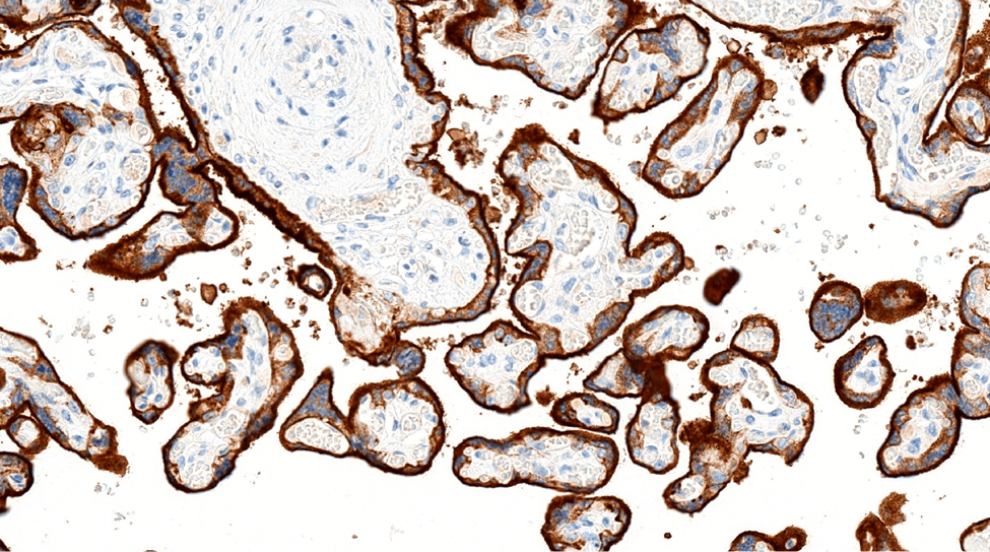Clinical Insights

Featured Histology Image of the Month : February
FEATURING THIS FEBRUARY:
Placenta stained via Immunohistochemistry (IHC) for PD-L1 protein (programmed cell death ligand 1)
Recent research highlights the crucial role of PD-L1 in cancer immunotherapy, emphasizing its significance as a predictive biomarker for treatment response and patient prognosis. MLM Medical Lab’s capabilities in exploring PD-L1 expression dynamics facilitate current research efforts and make us a great partner for oncology projects.
Elucidating the complex interactions involving PD-L1 in the tumor microenvironment sheds light on immune evasion mechanisms, paving the way for innovative therapeutic interventions targeting immune checkpoints. Let’s combine our efforts to enhance therapeutic efficacy and patient outcomes worldwide.
GENERAL BACKGROUND
Programmed death-ligand 1 (PD-L1) plays a crucial role in cancer immunotherapy, particularly in therapies targeting the programmed cell death protein 1 (PD-1) pathway. Here’s a breakdown of its role:
- Immune Evasion: Cancer cells can hijack the PD-L1 pathway to evade immune surveillance. PD-L1 is often overexpressed on the surface of cancer cells, allowing them to bind to the PD-1 receptor on T cells. This interaction sends inhibitory signals to T cells, suppressing their activity and allowing cancer cells to escape destruction by the immune system.
- Therapeutic Target: Blocking the interaction between PD-L1 and PD-1 with immune checkpoint inhibitors (ICIs) has emerged as a powerful strategy in cancer immunotherapy. Antibodies targeting either PD-L1 (such as atezolizumab, durvalumab, and avelumab) or PD-1 (such as pembrolizumab and nivolumab) can disrupt this interaction, thereby releasing the brakes on the immune system and enabling T cells to attack cancer cells.
- Clinical Applications: PD-L1 expression levels in tumors have been used as biomarkers to predict responses to PD-1/PD-L1 blockade therapy. Patients with higher levels of PD-L1 expression in their tumors are more likely to respond to treatment with PD-1/PD-L1 inhibitors. However, it’s important to note that PD-L1 expression alone is not a definitive predictor of response, and other factors such as tumor mutational burden and the tumor microenvironment also play crucial roles.
- Combination Therapies: PD-L1 inhibitors are often used in combination with other cancer treatments, such as chemotherapy, targeted therapy, and other immunotherapies, to enhance their efficacy. Combinations of ICIs targeting different immune checkpoints or combining ICIs with other modalities are being explored in clinical trials to improve outcomes for patients with various cancer types.
In short, PD-L1 is a key player in cancer immune evasion, and therapies targeting the PD-1/PD-L1 pathway have shown remarkable success in treating various types of cancer. Ongoing research continues to refine our understanding of PD-L1 biology and optimize its therapeutic applications in oncology.
